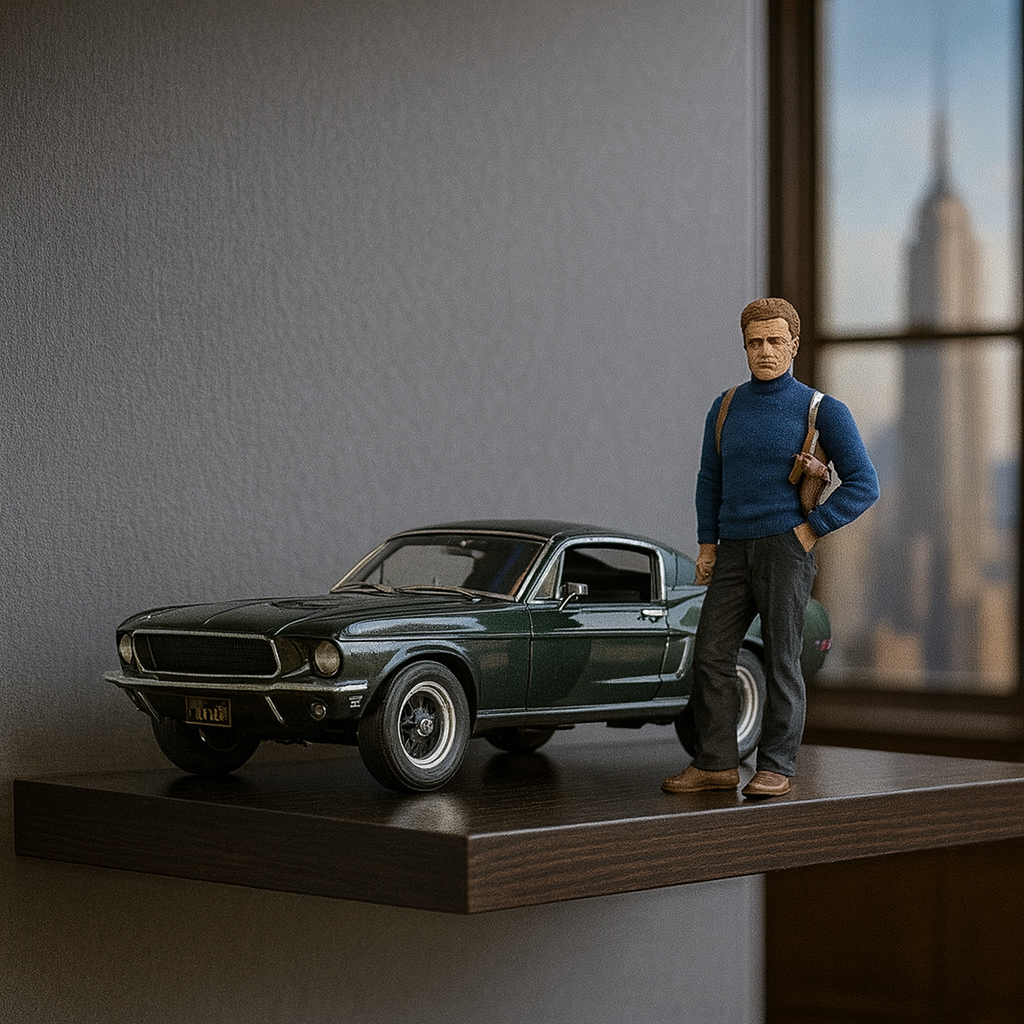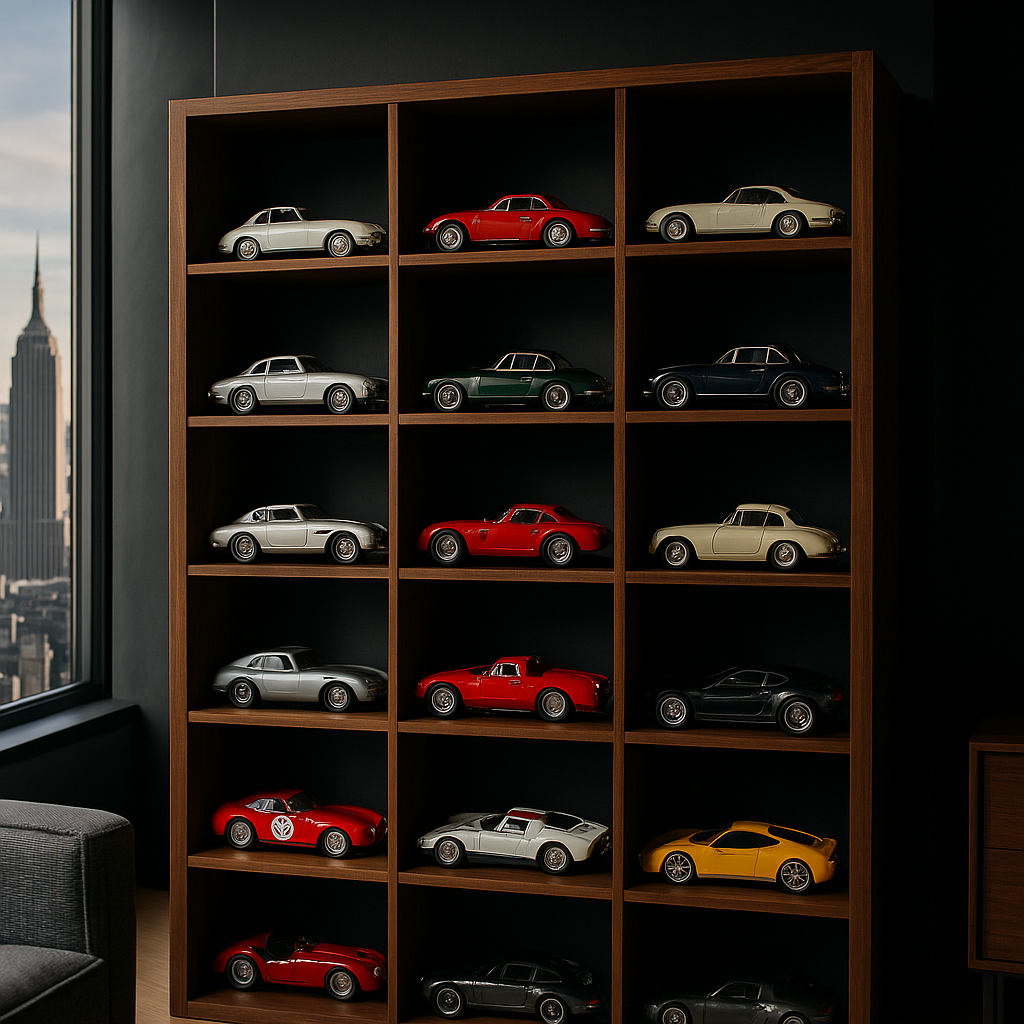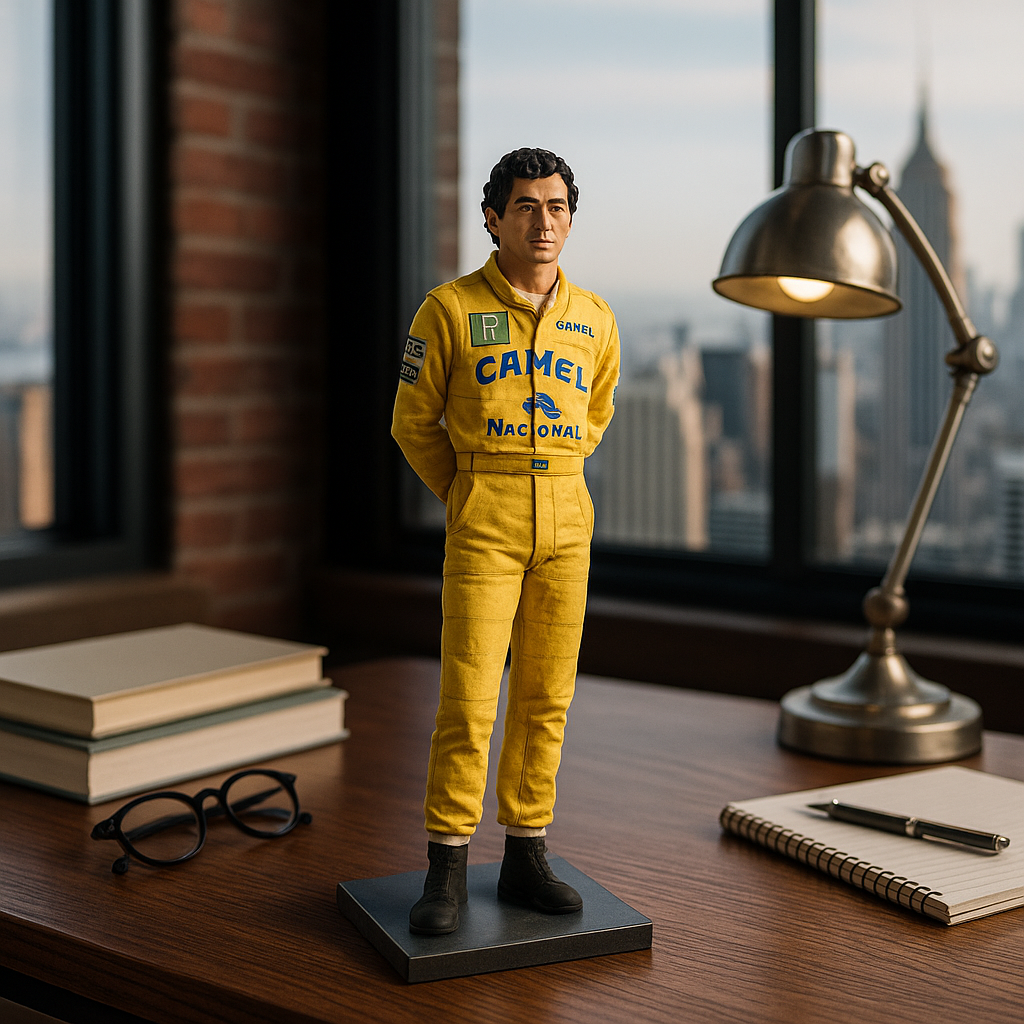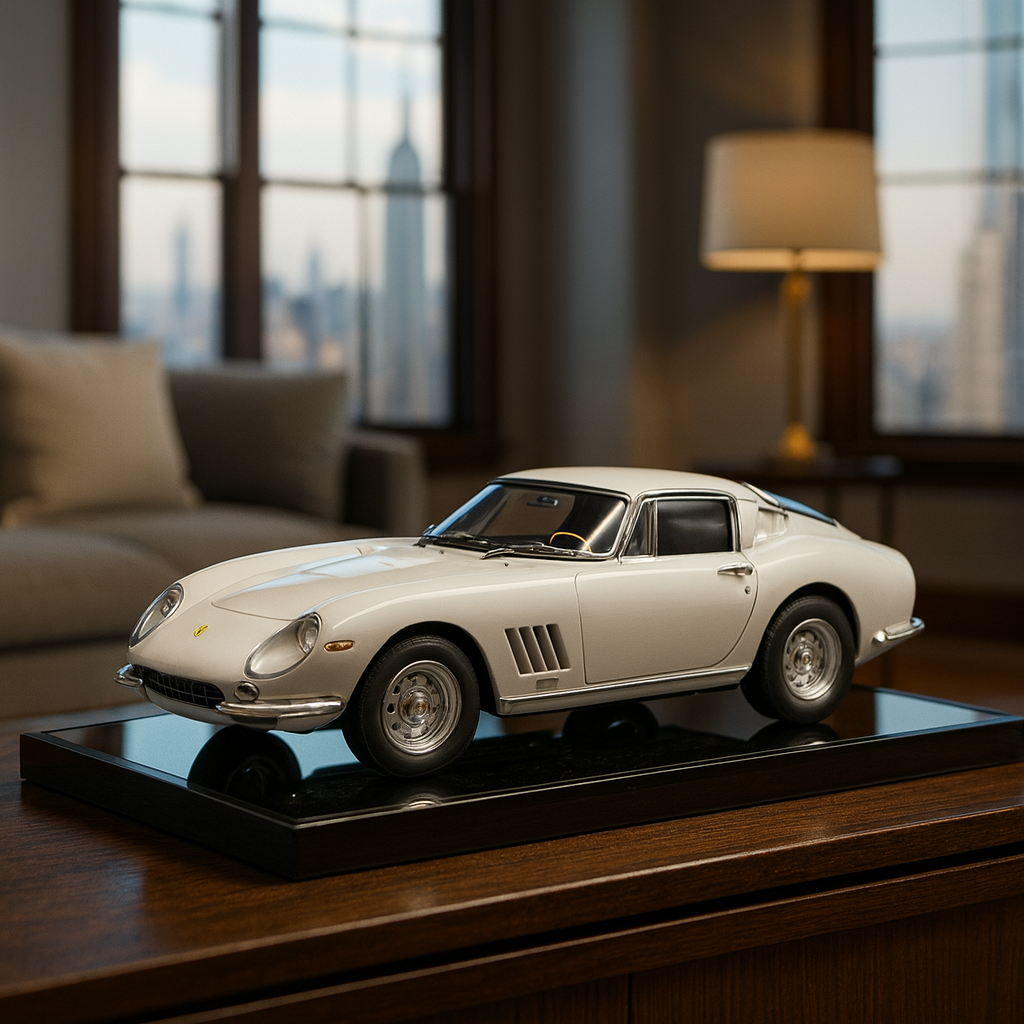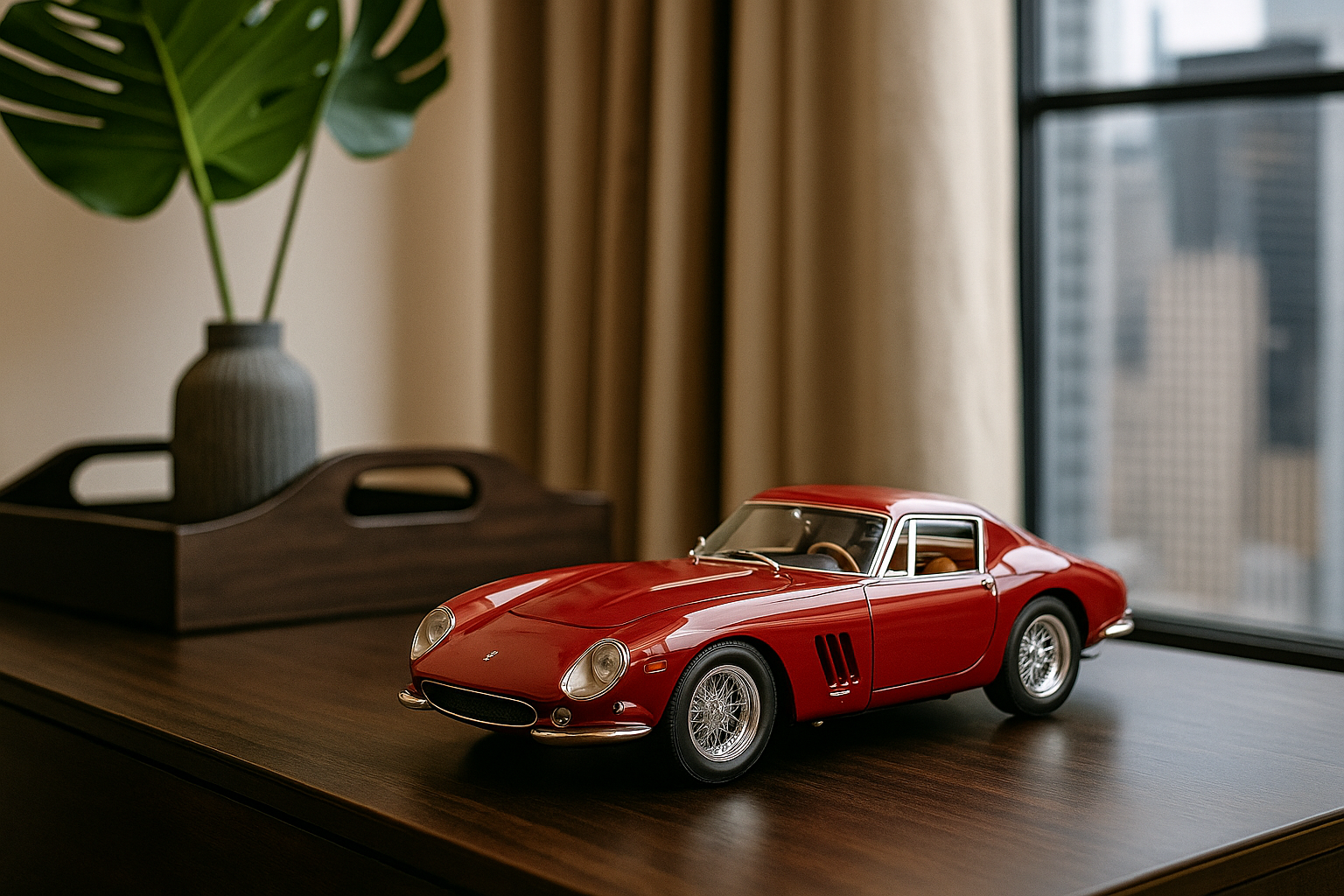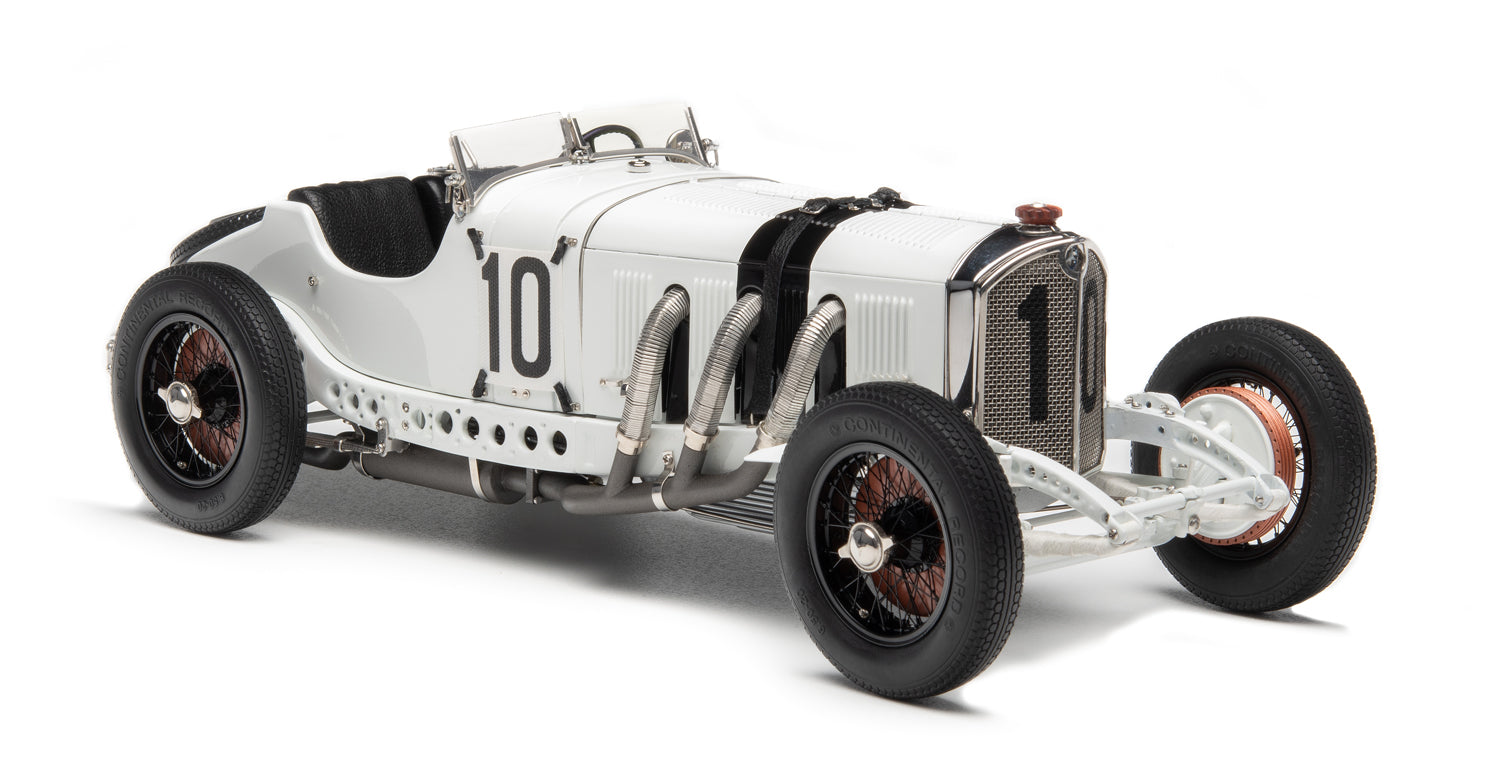


Mercedes-Benz SSKL #10 Mille Miglia 1931 Hans Stuck CMC M-188 LE

Description
Mercedes-Benz SSKL Mille Miglia 1931 #10 Hans Stuck, Limited Edition 800 pieces
The racing scene from the mid- to late 1920s, and even as late as 1931, was largely dominated by one automobile brand. It was Mercedes-Benz with its legendary 7.1-liter supercharged models from the SSK series.
Such a race-proven car, also reverently nicknamed "the White Elephant" due to its immense power and impressive size, caused a sensation again in 1931, together with its brilliant driver Rudolf Caracciola and his teammates Hans Stuck and Otto Merz. Despite the global economic crisis and the resulting limited support from the Daimler-Benz plant in Stuttgart-Untertürkheim, Rudolf Caracciola and his two teammates Hans Stuck and Otto Merz achieved notable successes, each driving a weight-increased SSKL. In addition to Caracciola's impressive victory in the 1931 Mille Miglia, further great results followed for Mercedes: "Caratsch's" victory in the German Grand Prix and the strong placings of Otto Merz and Hans Stuck, who finished fifth and sixth in the same race.
CMC has already launched the “Caratsch” winning car with starting number 8 as a model in recent years.
For 2018, we want to relive the German Grand Prix on July 19, 1931, which was held on the Nordschleife of the Nürburgring, and pay tribute to the two Mercedes drivers Otto Merz and Hans Stuck and their SSKL racing cars with a faithfully reproduced model of each of their vehicles.
The race was held in two groups.
Group I for vehicles over 1100 cm3 displacement with 22 laps of 22.81 km each = total distance of 501.82 km and
Group II for vehicles up to 1100 cm3 displacement with 18 laps of 22.81 km each = total distance of 410.58 km.
Both teams of participants started the race at the same time. It was assumed that both groups would finish at approximately the same time.
To visually distinguish them for the pit crew and spectators, the Group I cars had a wide black horizontal stripe across the hood, while Group II cars had to have a white horizontal stripe in the same position above the hood. Since many of the "smaller" racers competed in the German racing colors of white, they also had a narrow black stripe painted along the outer edge of the white bar for identification.
Mercedes had already geared up for this race two weeks earlier at the Nürburgring, where they meticulously prepared under the direction of race director Alfred Neubauer. In addition to the actual racing practice after work, the training program primarily included tire changes with a newly developed quick-action jack and refueling procedures. This led to Caracciola, for example, and his racing mechanic managing the entire tire change in one minute and 10 seconds. The other teammates weren't much slower.
A starting field of 48 participants (Groups I and II) from 10 nations took part in the German Grand Prix over 22 and 18 laps respectively on the initially rainy race day of 19 July 1931.
Mercedes competed with SSKs and the lightweight SSKL racers, which were primarily reserved for well-known factory drivers such as Caracciola, von Brauchitsch, Merz, Stuck, and Spandel. They primarily had to fear the other well-known factory racing teams of Bugatti, Maserati, and Alfa Romeo, which, with their significantly lighter and well-powered vehicles and internationally renowned racing stars such as Chiron, Varzi, Fagioli, and Nuvolari, were increasingly shaking up the racing scene and becoming truly serious opponents for Mercedes.
The race itself was a clear win for Rudolf Caracciola, who dominated from start to finish and took the victory comfortably. Only from the 13th lap, after the rain stopped, did Louis Chiron in a Bugatti steadily reduce his deficit to Caracciola. However, it wasn't enough for him to catch Caracciola, whose lead was simply too large.
The other two Mercedes racing drivers, Otto Merz with starting number 12 and Hans Stuck with starting number 10, drove a consistently smooth and considered race and thus finished in the respectable fifth and sixth places.
Conclusion: "It went well again." The race demonstrated that winning with the SSKL "big elephant" was becoming increasingly difficult. Its days as a Grand Prix racing car were numbered. Bugatti, Maserati, and Alfa Romeo set the tone in the following years. As a touring and sports car, however, the SSK was still one of the best in the world.
CMC Legal Disclaimer
The use of racing team and/or driver names, symbols, starting numbers, and/or descriptions is solely for reference purposes. Unless otherwise stated, it does not imply that the CMC scale model is a product of any of these racing teams/drivers or endorsed by any of them.
Technical data of the original vehicle
Six-cylinder in-line engine with overhead camshaft,
Switchable compressor.
| Performance without compressor: | 240 hp at 3,300 rpm |
| Performance with compressor: | 300 hp at 3,300 rpm |
| Engine capacity: | 7,056 cc |
| Top speed: | 235 km/h |
| Wheelbase: | 2,950 mm |
| Length: | 4,250 mm |
| Front track width: | 1,470 mm |
| Rear track width: | 1,460 mm |
Notice
Mercedes-Benz SSKL Mille Miglia 1931 #10 Hans Stuck, Limited Edition 800 pieces
The racing scene from the mid- to late 1920s, and even as late as 1931, was largely dominated by one automobile brand. It was Mercedes-Benz with its legendary 7.1-liter supercharged models from the SSK series.
Such a race-proven car, also reverently nicknamed "the White Elephant" due to its immense power and impressive size, caused a sensation again in 1931, together with its brilliant driver Rudolf Caracciola and his teammates Hans Stuck and Otto Merz. Despite the global economic crisis and the resulting limited support from the Daimler-Benz plant in Stuttgart-Untertürkheim, Rudolf Caracciola and his two teammates Hans Stuck and Otto Merz achieved notable successes, each driving a weight-increased SSKL. In addition to Caracciola's impressive victory in the 1931 Mille Miglia, further great results followed for Mercedes: "Caratsch's" victory in the German Grand Prix and the strong placings of Otto Merz and Hans Stuck, who finished fifth and sixth in the same race.
CMC has already launched the “Caratsch” winning car with starting number 8 as a model in recent years.
For 2018, we want to relive the German Grand Prix on July 19, 1931, which was held on the Nordschleife of the Nürburgring, and pay tribute to the two Mercedes drivers Otto Merz and Hans Stuck and their SSKL racing cars with a faithfully reproduced model of each of their vehicles.
The race was held in two groups.
Group I for vehicles over 1100 cm3 displacement with 22 laps of 22.81 km each = total distance of 501.82 km and
Group II for vehicles up to 1100 cm3 displacement with 18 laps of 22.81 km each = total distance of 410.58 km.
Both teams of participants started the race at the same time. It was assumed that both groups would finish at approximately the same time.
To visually distinguish them for the pit crew and spectators, the Group I cars had a wide black horizontal stripe across the hood, while Group II cars had to have a white horizontal stripe in the same position above the hood. Since many of the "smaller" racers competed in the German racing colors of white, they also had a narrow black stripe painted along the outer edge of the white bar for identification.
Mercedes had already geared up for this race two weeks earlier at the Nürburgring, where they meticulously prepared under the direction of race director Alfred Neubauer. In addition to the actual racing practice after work, the training program primarily included tire changes with a newly developed quick-action jack and refueling procedures. This led to Caracciola, for example, and his racing mechanic managing the entire tire change in one minute and 10 seconds. The other teammates weren't much slower.
A starting field of 48 participants (Groups I and II) from 10 nations took part in the German Grand Prix over 22 and 18 laps respectively on the initially rainy race day of 19 July 1931.
Mercedes competed with SSKs and the lightweight SSKL racers, which were primarily reserved for well-known factory drivers such as Caracciola, von Brauchitsch, Merz, Stuck, and Spandel. They primarily had to fear the other well-known factory racing teams of Bugatti, Maserati, and Alfa Romeo, which, with their significantly lighter and well-powered vehicles and internationally renowned racing stars such as Chiron, Varzi, Fagioli, and Nuvolari, were increasingly shaking up the racing scene and becoming truly serious opponents for Mercedes.
The race itself was a clear win for Rudolf Caracciola, who dominated from start to finish and took the victory comfortably. Only from the 13th lap, after the rain stopped, did Louis Chiron in a Bugatti steadily reduce his deficit to Caracciola. However, it wasn't enough for him to catch Caracciola, whose lead was simply too large.
The other two Mercedes racing drivers, Otto Merz with starting number 12 and Hans Stuck with starting number 10, drove a consistently smooth and considered race and thus finished in the respectable fifth and sixth places.
Conclusion: "It went well again." The race demonstrated that winning with the SSKL "big elephant" was becoming increasingly difficult. Its days as a Grand Prix racing car were numbered. Bugatti, Maserati, and Alfa Romeo set the tone in the following years. As a touring and sports car, however, the SSK was still one of the best in the world.
CMC Legal Disclaimer
The use of racing team and/or driver names, symbols, starting numbers, and/or descriptions is solely for reference purposes. Unless otherwise stated, it does not imply that the CMC scale model is a product of any of these racing teams/drivers or endorsed by any of them.
Technical data of the original vehicle
Six-cylinder in-line engine with overhead camshaft,
Switchable compressor.
| Performance without compressor: | 240 hp at 3,300 rpm |
| Performance with compressor: | 300 hp at 3,300 rpm |
| Engine capacity: | 7,056 cc |
| Top speed: | 235 km/h |
| Wheelbase: | 2,950 mm |
| Length: | 4,250 mm |
| Front track width: | 1,470 mm |
| Rear track width: | 1,460 mm |


